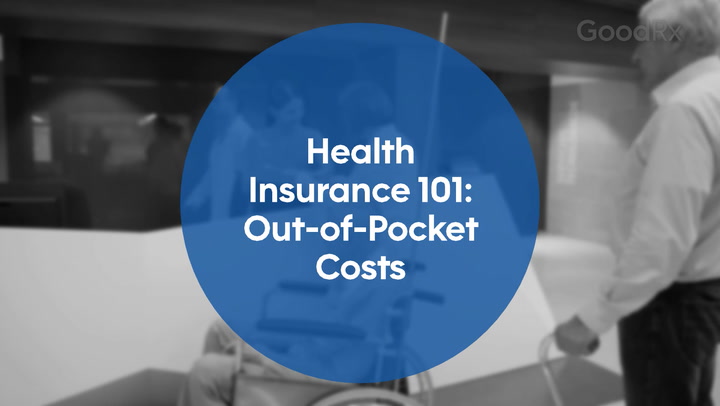
What Are Fee-for-Service Insurance Plans?
Key takeaways:
Fee-for-service (FFS) insurance gives you the maximum amount of leeway in making healthcare decisions — but you’ll pay a high price for it.
FFS plans have no networks and no referrals, so you can see any doctor you like.
The best-known example of FFS insurance is Medicare.

Fee-for-service health insurance — also known as traditional indemnity insurance — is a common and familiar way to pay for medical care. For each service you receive, your insurance company pays a fee to the doctor or facility that provided it.
There are no provider networks and no referral requirements. This lack of structure gives you many options as a patient but can also make for extra work on your part.
Read on to learn more about the basics of fee-for-service (FFS) insurance as well as its pros and cons.
Prescription Savings Are Just the Beginning
See what other benefits you qualify for—from cashback cards to cheaper insurance.

How does fee-for-service insurance work?
This type of insurance plan works just as its name suggests:
You go to the doctor for a medical treatment.
To get paid for that treatment, the doctor files a claim with your insurance company.
If you’ve already met your insurance deductible, the insurer pays most of the doctor’s fee.
You pay the remainder of the fee out of pocket as coinsurance.
Original Medicare is the best-known example of an FFS plan. At your healthcare provider’s office, you pay the full cost for each service until you’ve reached your yearly deductible. (One exception: Wellness visits are free.) After that, the provider bills Medicare for each individual service. You share the cost through copayments or your coinsurance percentage.
Medicare Advantage offers some private fee-for-service (PFFS) plans that do have provider networks. You can still see any doctor for primary or specialty care without a referral, but you may pay less by choosing one who’s in network.
How do providers get paid under fee-for-service plans?
With some FFS plans, your healthcare provider will ask you to pay the full cost of the treatment upfront. This approach is called point-of-service collections. After you’ve paid, you file an insurance reimbursement claim.
Read more like this
Explore these related articles, suggested for readers like you.
Other plans require the doctor to request payment directly from the insurance company. For example, if you have original Medicare, by law your doctor must bill Medicare directly for your care.
How do patients get reimbursed under fee-for-service plans?
If your provider or insurance plan requires payment upfront, you’ll have to file a claim for reimbursement. Here are a few important things to know:
Some insurance companies have a specific form you must use.
You’ll usually have to submit a receipt as documentation along with your claim.
The insurance company may ask for additional materials from your doctor, such as medical records or reports.
You pay your annual deductible out of pocket, which is not reimbursed. Once that’s done, for the rest of the year, the insurer will reimburse you for the fee you paid — minus any coinsurance or copays — in the form of a direct deposit or a check.
It can take up to 90 days to receive reimbursement. If your insurance claim is denied, you can file an appeal. Check the rules of your plan for details.
What are the biggest pros and cons of fee-for-service insurance?
Having a clear idea of the positive and the negative things about FFS insurance can help you decide whether it’s the best type of plan for you.
Pros:
FFS insurance lets you see any doctor at any time. There’s no need to worry about whether your favorite doctor is in network.
You do not need a referral with FFS insurance. This is convenient if you want flexibility in seeking care. For example, you may travel often and want to see doctors in other places.
Since there’s no health maintenance organization (HMO) or preferred provider organization (PPO) involved with pay rates, a physician’s office may be willing to negotiate their fee.
Cons:
Providers have no incentive to control costs. They are free to charge you far more than the usual, customary, and reasonable price for a service. More expensive services generate larger insurance payouts — and, thanks to cost-sharing, bigger bills for you, too.
Healthcare providers get paid for the quantity of billable services, not the quality of patient outcomes. As a result, some may perform services you don’t necessarily need (overtreatment). By the same token, providers may overlook preventive care that does not carry a fee (undertreatment).
You may have to wait up to 90 days for your insurance claim reimbursement. If the insurance company needs more information about your claim, the wait could be even longer.
If you don’t form a relationship with a PCP whom you see regularly, you might forget or neglect preventive care checkups. This hit-or-miss scheduling could delay your diagnosis and treatment of illness.
Why is the fee-for-service model so expensive?
Administrative fees drive up the cost of FFS insurance, resulting in higher costs for patients. These plans have operational expenses of 8%, compared to about 3% in other countries.
What are the best alternatives to fee-for-service insurance?
If you have a choice of health plans, you can save money by selecting an HMO. HMOs and other forms of managed care organizations are set up to reduce your healthcare costs. In an HMO, you typically sign up with a primary care provider (PCP) who refers you to in-network specialists as needed. Premiums, copays, and coinsurance apply; out-of-pocket charges are capped.
A preferred provider organization (PPO) is a more expansive version of managed care. It does not require you to select a PCP. You can see a doctor who’s outside the network, but it’ll cost you more.
Some other common alternatives include:
Medicare Advantage plans with value-based payment systems. They pay providers based on quality care and efficiency, not for service volume.
Subscription plans (also known as direct primary care), which give the practice an annual fixed payment per patient. In cases where providers receive a bonus based on good patient outcomes, the quality of care improves, according to a 2019 study in the Journal of the American Medical Association.
Bundled payment programs, which provide a fixed payment for a group of services. Healthcare providers receive a salary or set monthly per-patient payments.
The best alternatives reward providers for high-quality patient services. Payment based on outcomes would improve care for older adults with chronic diseases, according to a study from the National Academy of Medicine. It can also reduce healthcare costs up to 30%.
The bottom line
Fee-for-service insurance pays healthcare providers for each treatment or procedure, without regard for the treatment’s effectiveness. This approach drives up the cost of care; it can also lead to over- or undertreatment. Joining an HMO, PPO, or POS plan can help you get healthcare at a lower cost.
Why trust our experts?


References
Calsyn, M. (2012). Alternatives to fee-for-service payments in health care. Center for American Progress.
CMS.gov. (2022). Medicare Advantage value-based insurance design model. U.S. Centers for Medicare & Medicaid Services.
Comprehensive Primary Care. (n.d.). Paying doctors upfront: Point-of-service collections.
Fulmer, T., et al. (2021). Actualizing better health and health care for older adults. Health Affairs.
HealthCare.gov. (n.d.). Payment bundling. U.S. Centers for Medicare & Medicaid Services.
HealthCare.gov. (n.d.). UCR (usual, customary, and reasonable). U.S. Centers for Medicare & Medicaid Services.
Heaton, J., et al. (2021). Managed care organization. StatPearls.
Hunter, K. (2021). The case against fee-for-service health care. Third Way.
Lee, V. S. (2020). Fee for service is a terrible way to pay for health care. Try a subscription model instead. Stat News.
Lyu, H., et al. (2017). Overtreatment in the United States. PLoS One.
Meuse, D. (2020). Is COVID-19 the end of fee-for-service payment? State Health & Value Strategies.
Navathe, A. S., et al. (2019). Effect of financial bonus size, loss aversion, and increased social pressure on physician pay-for-performance. JAMA Network Open.
Porter, M. E., et al. (2016). How to pay for health care. Harvard Business Review.
Sokol, E. (2020). Healthcare reimbursement still largely fee-for-service driven. RevCycle Intelligence.
Virginia Health Information. (2019). Traditional indemnity insurance plans.
Zuvekas, S. H., et al. (2016). Fee-for-service, while much maligned, remains the dominant payment method for physician visits. Health Affairs.




























